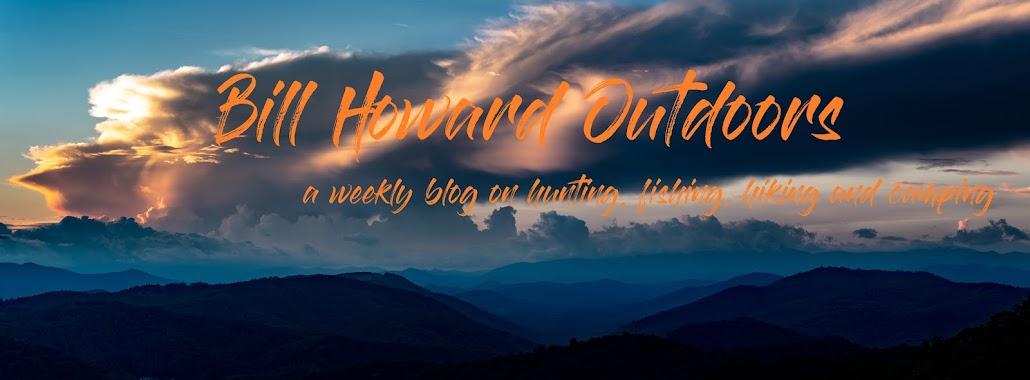The North Carolina Hunting and Fishing Regulations Digest comes out next week. Soon after, the draw permits begin. I urge you to look through the digest to familiarize yourself with and new rules as well as look at the permit opportunities for this coming season.
Part of the subject matter in our hunter education classes is regarding identifying the game animals. I often share personal stories to tie into the subject matter I am teaching. For instance, I applied for a bear hunt for an area several years ago and was lucky enough to get drawn. The Mount Mitchell Bear Sanctuary had just been opened for a permit bear hunt. In the selection process, the applicant can choose up to five dates in order to do the hunt.
After getting chosen, I began the scouting process at home. I looked over the topo maps, then compared to satellite images as well. I downloaded a program onto my smart phone that would allow me to mark boundaries of the area and use the gps feature of the phone instead of the cellular service. This was important due to the spotty service in the area. I have a 3-d archery bear target in the backyard and practiced exclusively from different yardages and angles. The practice not only helped with my shooting, but also visualizing the bear. By burning the image in my head, I would be less likely to become nervous before the shot and I could also compare the size of the target to help determine the size of the bear. The target represents a 150 pound bear.
Read more about bears in North Carolina
The hunt was in October, and I knew there was a good possibility of sub-freezing temperatures, especially at night. I wanted to rough it for the most part, so I had to make sure my gear would suffice the cold and wet if necessary. After researching all I could at home, there were only three things left. Scouting the land on foot, going over the hunt plan with my wife in case something was to happen, and hunting. The scouting on foot would come the Saturday and Sunday before the hunt (it was a Monday thru Wednesday draw date). This would allow me to scout, set camp, and give me a chance to run to town in case I did forget anything. The hunt plan was short and sweet. I would be hunting one of two areas, either the South Toe or Curtis Creek, depending on the scouting results from weekend. Susan knew when I was to return home, so if she did not hear from me, it would be time to call the authorities.
The hunt was in October, and I knew there was a good possibility of sub-freezing temperatures, especially at night. I wanted to rough it for the most part, so I had to make sure my gear would suffice the cold and wet if necessary. After researching all I could at home, there were only three things left. Scouting the land on foot, going over the hunt plan with my wife in case something was to happen, and hunting. The scouting on foot would come the Saturday and Sunday before the hunt (it was a Monday thru Wednesday draw date). This would allow me to scout, set camp, and give me a chance to run to town in case I did forget anything. The hunt plan was short and sweet. I would be hunting one of two areas, either the South Toe or Curtis Creek, depending on the scouting results from weekend. Susan knew when I was to return home, so if she did not hear from me, it would be time to call the authorities.
All started well when I arrived. I was actually glad to see I had no cell service. This would be one of the things I enjoyed most! Work could not call me and I could not call work. A true vacation! After scouting, I decided on hunting the area around the South Toe. I found tracks in a couple of places, and spotted a field on the sanctuary I could set up in. When I go up in a stand, I will usually use the range finder to mentally mark spots and yardages. While bowhunting, I try to keep the movements to a minimal. If I have a dark patch of grass, I will check the yardage. A twig lying on the ground, a large leaf; all make good yardage markers.
Well the very first evening, about 200 yards away, I saw a bear. She cut the corner of the field and never entered range. I consider myself an opportunistic hunter, so remember that as this story ends. I waited in the stand a while longer, and just before shooting light would disappear, is when I saw my target. It was black and on the small size as it left the cover of the brush and entered the field. It was headed straight toward the tree I was set up in. If it made it to the 50 yard mark, I decided I would take my shot. I waited patiently, and as it stepped toward the large golden leaf, I drew back the arrow and string. I was confident from 50 yards, but like I said, this one was on the small size. With a release of my breath, then a twitch of my finger on the trigger release, the arrow sailed to its mark. The 100 grain G5 Small Game Head hit true, and after only a few seconds of rolling around, I had my trophy. Not a bear mind you. But a trophy, of sorts. And this is how the story ends of my bear hunt at Mount Mitchell Bear Sanctuary the time I was skunked.
 |
| Skunked in 2008. |

